Parquetry Workshop Day 1-1/2
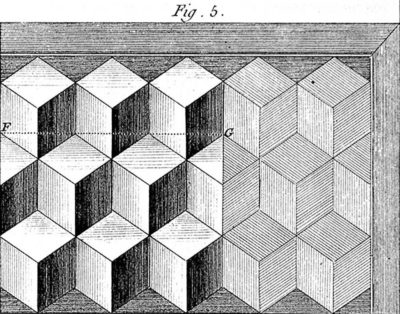
Last weekend was the final workshop at The Barn for this year, a 2-1/2 day exploration of 18th Century Parquetry as documented by Roubo. It was great fun with four engaging and gifted woodworkers present to make it a bunch of fun. Gerald from PA was the first to arrive Friday morning, Glenn from TX arrived just before lunch after traveling for more than 24 hours (his flights were sidelined by the weather at DFW) and Lou and Jim arrived from NC just as we started at 1PM. My camera battery was dead so I had very few pictures from that first half-day.
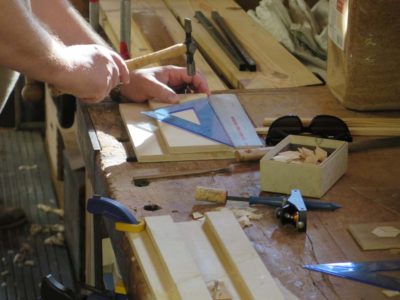
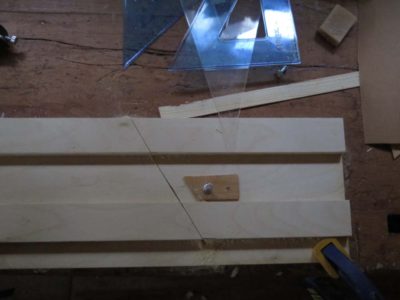
Using the simplest of tools and supplies — a 30-60-90 triangle, and some small pieces of baltic birch plywood — we got our first of three sawing/planing jigs built in order to create the first exercise of the easiest non-rectilinear patterns from Plate 286, Figure 5. Once the jigs were done we planed and re-sawed the southern yellow pine we were using.
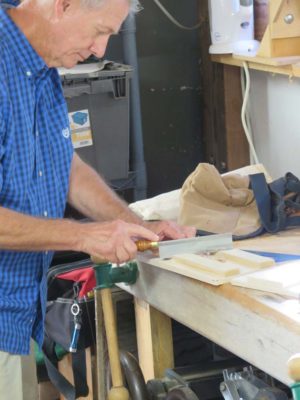
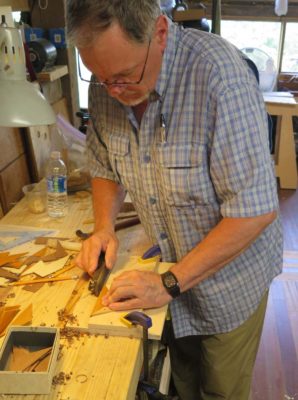

Then the work began in earnest as the task was to first cut and plane-trim to uniformity as many equilateral 60-degree parallelogram lozenges as possible (this pic is from a later exercise but the trimming with a block plane i the jig is essentially identical), then begin the oft-times confusing task of assembling the pattern.
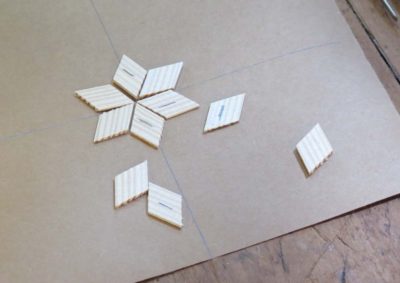
Once you get the hang of putting the pieces together it goes quickly, but at the beginning there is much exclamation and flipping of individual pieces.
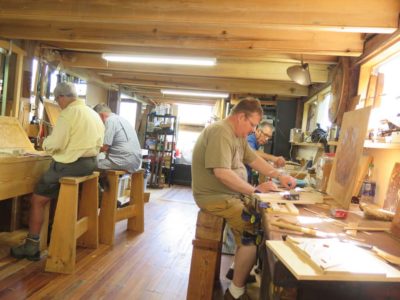
Quietness punctuated with an occasional expression of aggravation reigned for a couple of hours as the lozenges were glued down to brown paper with hot hide glue.
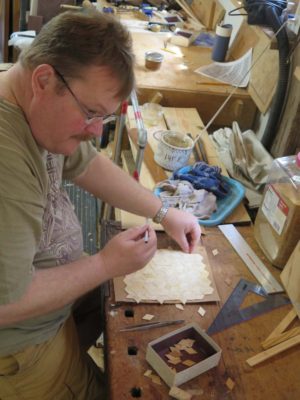
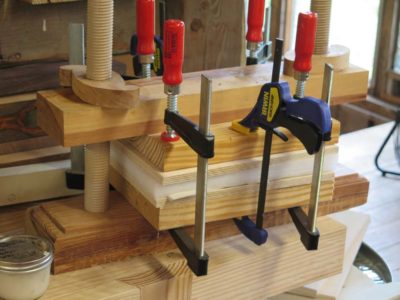
A couple hours later the sheets were finished and ready for mounting on another piece of baltic birch plywood. They were sandwiched between a Roubo-esque press and a handful of clamps for a couple hours.
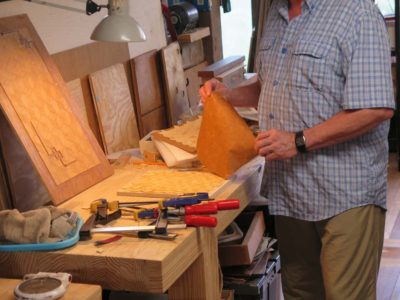
After taking them out of the press and lightly dampened the paper backing was easily peeled off, leaving the panels festooned with the new design.
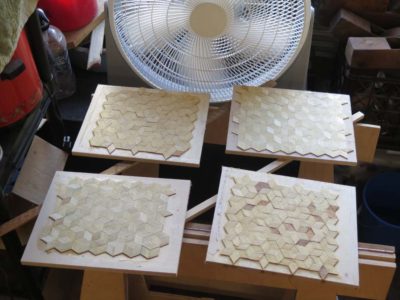
The trimming out and finishing of these panels was left to the attendees to complete once they got back home. Our emphasis was the layout and creating the patterns.

The second exercise began Saturday around mid-day. It was more complex in that it required a much shallower sawing and planing angle, and each pattern required the use of three species of wood.
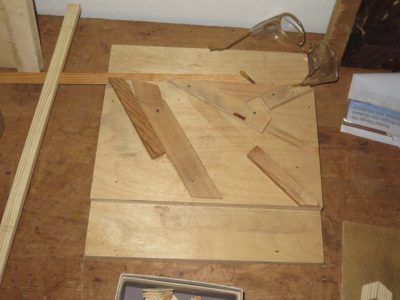
For this we needed a sawing/planing jig set at 30 degrees rather than 60, in order to cut the triangles rather than the equilateral parallelograms of the first exercise. This image is of my own jig, which includes both the 60-degree and 30-degree setups.
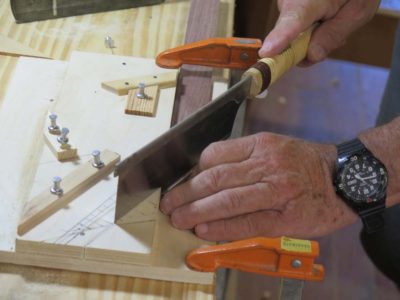
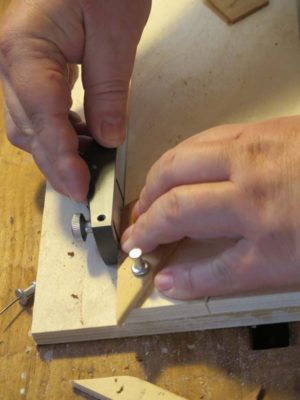
Next post we’ll follow exercises #2 and #3 as they progressed.


Join the Conversation!